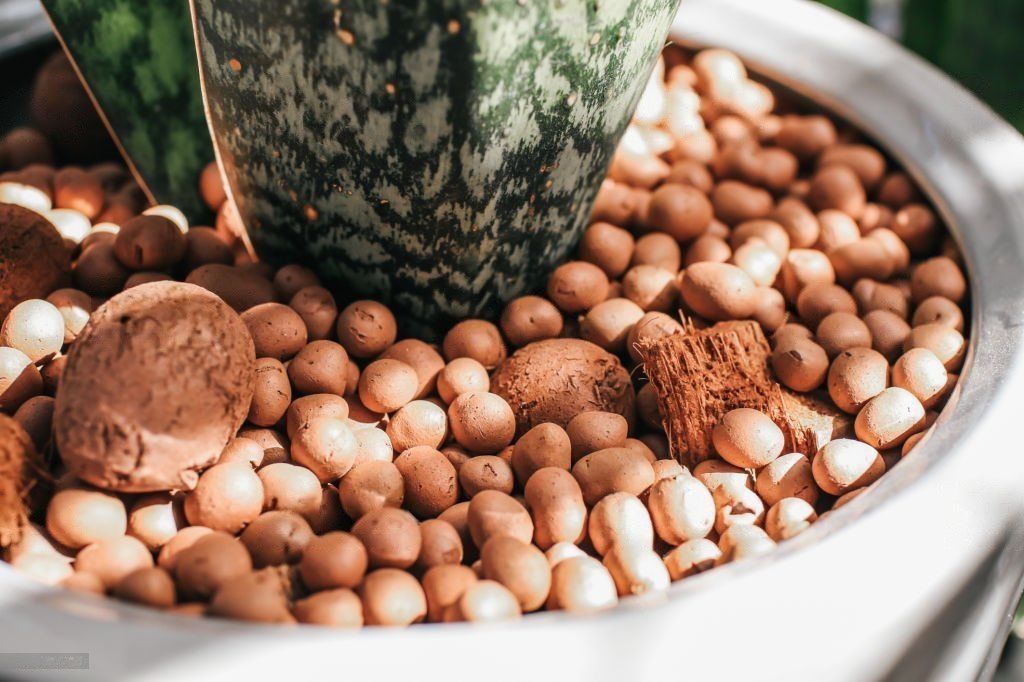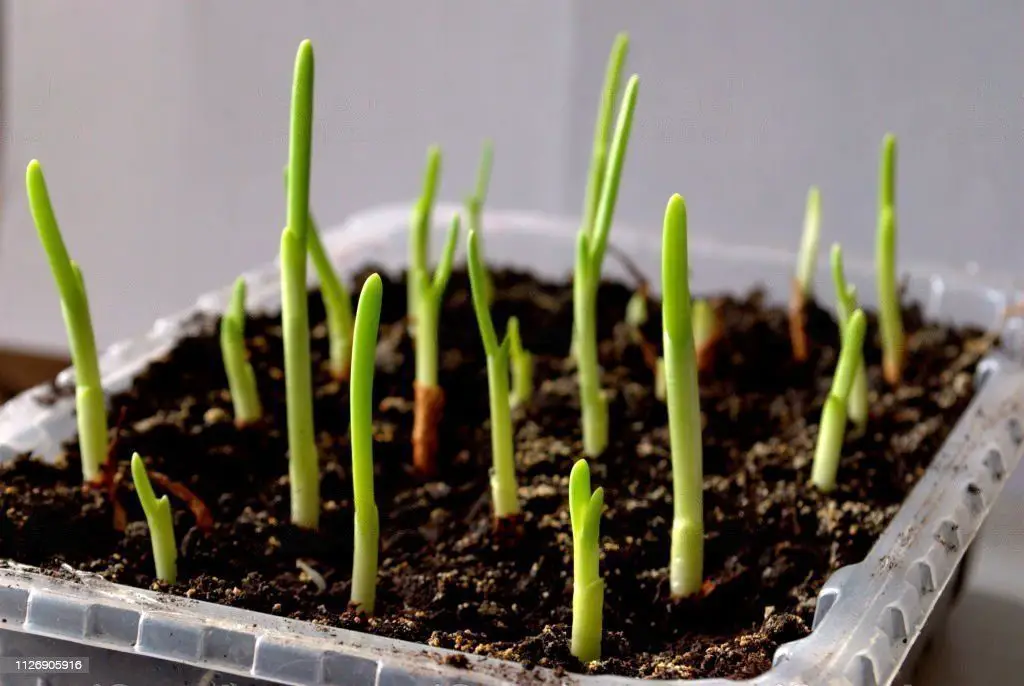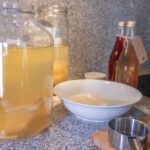People living in the flat have little of no available space, which means that indoor farm enthusiast have to chance to grow the best herbs and vegetables to grow indoors.
Aside from searching the best place in the apartment, another problem is how do you set up a good environment you do indoor farming. Growers had to solve the problem of low light, poor ventilation, insects, and insufficient water production which begs the question – Can you have an indoor herb garden?
With the right tools and equipment, It is possible to grow large amounts of vegetables indoors without a balcony. The important thing is to figure out what will produce the best value per square foot and come up with a method that costs less than buying your produce at the grocery store.
You need to allocated how much space you want to use when gardening indoor and decide if that space whether it’s good for vertical or horizontal farming. Close to the window is better with lighting conditions, but you can also grow well in basements or garages with additional lighting. Then list what you want to develop and start planning your process.
See also: How Long Does It Take to Grow Herbs from Seeds
Things you need to grow herbs and vegetables indoors
Indoor Light
Natural light is very important when you want to grow your herbs and vegetables indoors. No matter what vegetables you want to grow, even a well-lit window sill is not enough to grow vegetables. The only exception can be a small bag of herbs or a trellis in the window for peas. Even then, these plants will improve with more light. Any indoor garden system will require supplemental lighting. LED lights are great because they can direct all of their output in a focused direction. They also work very well, and there is no fire. Fluorescent bulbs are a good second choice, although you will need additional equipment to direct the light to the leaves.
Choose proper medium

Soil is not an ideal thing to place when farming herbs and vegetables indoors. Soil is heavy, unhealthy and can breed insects in the indoor environment. Indoor system prefers rockwool, coir, clay pebbles, or a soilless mixture using perlite or vermiculite. There are many different options for growing media, and the best place to find them is through hydroponic suppliers. However, all these traditional media systems have one thing in common: they are not good. This means that they have no nutritional value, which means that you have to invest in fertilizers.
Water

Water is very important for plant growth. While outdoor garden systems focus on planting in the ground and adding water, many indoor systems focus on planting seeds in water with little to no growth. However, you decide to create your own growing system, you need to have a plan for propagating your plants with water. Outside, water can seep into the ground or be removed from the surface. Inside, water doesn’t come out easily. Free-draining soil media is critical to indoor plant root health.
Container

The indoor garden system will be able to hold down na soil-alternative mediums, give the roots to sprout, drain and collect excess water, and not rot or mold in this environment .
The best choice for small growing systems is some type of container like plastic tubs. You can make container from wood as long as the wood is treated in some way to prevent water damage.
For larger systems, metal containers may be simpler. They can hold more weight than plastic and come in larger sizes than most bins. However, they can rust and have sharp edges. You will need to do a lot of work to get them cleaned properly.
For traditional systems, IBC bins are the best bet. They are easy to find and combine the best parts of plastic and metal. The objects themselves are made of plastic, which makes it easier and easier to cut. But, they come with a built-in machine, which makes them easy to install.
Best plant to grow in your apartment
This topic will list all the plants that are worth to plant when you’re farming indoor. When you have the perfect environment, you can grow any herbs and vegetables indoors. However, some plants are not worth the wait if its consumes your time and space.
- Green Leafy vegetables. Leafy greens just need to have a direct sunlight and it’s easy to manage without watering
- Lettuce. a part of the daisy family because it has characteristics in the root system and stem, leaves, flowers, fruits and seeds, pollen and metabolites. It is the maybe most easiest when you want to grow plants indoor. It handles indoor growing at ease because it is shade-tolerant. The only disadvantage is it’s cheap in the supermarket. It may not be worth it to invest your time since you can only buy a cheap lettuce. Sustainable-wise its a good choice to plant if you want to eat organic.
- Chard/Kale/Arugula/Mustard. They thrive in milder climates, so as long as there is adequate light, they can grow successfully indoors. But they require sufficient airflow because they are vulnerable to bugs. These leafy greens are substantially more nutrient-dense than lettuce, hence more nutrient-dense growing medium is needed.
- Spinach. It has been grown for a long time because of its valuable nutritional properties, which include vitamins A, C, E, and K, as well as fiber, folate, magnesium, and other important anti-oxidants.To be able to harvest the spinach leaves, it is crucial to prevent the plant from flowering. There are many different spinach kinds, so it’s simple to select one that will grow indoors.
- Root Vegetable. While growing root vegetables indoors can be more difficult than growing flowering veggies, it can also be easier. To grow and mature, root vegetables require a growth medium that is both deep and adaptable.The good news is that root vegetables grow well indoors because they prefer cooler climates. To allow their expansion, they will need a deeper growing area, though.
- Radishes. As Brassicas, these vegetables are comparable to kale, chard, and broccoli. Radishes prefer cool temperatures, full sunlight, and growth medium that drains well. These root crops can be grown because they mature quickly and store well. There are many different types of radish and turnip, and while some are simple to acquire in grocery stores, there are gourmet kinds that are more challenging to find but simple to produce indoors.
- Carrots. Parsley and carrots are relatives and both are simple to cultivate and maintain. Carrots require loose growing medium that is at least 6″ deep and well-drained. Carrots may thrive inside as long as they receive direct light and airflow.
- Garlic and Onions. Although onions are technically a stem and garlic is a bulb, their growth requirements are similar to those of other root vegetables. Plant these strong-smelling plants with other vegetables in a soil-based grow bed to deter pests.
- Herbs. Herbs are the most simple plants to grow indoors. They’re also a high-value crop, so it’s well worth the time and work to build up a growing facility.The disadvantage of producing herbs is that they are not food; rather, they are spices. However, with a small investment, you may set up a growing space where you can cultivate a wide range of herbs to manufacture your own seasonings and herbal teas.
10 Fast Growing Vegetables You Can Harvest in 30 Days Or Less
Getting a late start on your gardening? Need a harvest right away? We’ll show you some amazing options for fast-growing plants that will yield crops or flowers in 30 days or less.
These fast-growing vegetables provide you with fresh, healthful nourishment quickly. Alternatively, when you have an empty location in the garden, utilize some of these flower selections to fill it with color.
Look through our list of 10 plants that grow in less than 30 days and try some of them in your garden.
Radish

Plant in the spring, approximately four weeks before the last frost in your location. Plant seeds in the garden directly 1/2 inch deep and 1 inch apart. Plant rows 12 inches apart or in groups in between or under other plants.
For a continual crop, sow every 10 days or so. When the temperature rises above 75°F, stop planting. Planting can be resumed in the early fall.
| Zone/Exposure | Soil Type | Water |
| Hardy annual so no specific zones | 6.5 to 7 pH, well-draining. | Give regular water and keep the soil moist. A radish bulb will split with irregular watering. |
Lettuce

Plant seeds 1/4 inch deep and 1/2 inch apart in the early spring. The rows should be spaced 12 inches apart. Water and lightly cover. Check that the latest frost has passed.
If you wish to transfer your seedlings, sow them inside in the late winter. Use high-quality potting soil and scatter seeds on top. Lightly cover and water with a spray bottle. Continue to spray until the seeds germinate.
When seedlings are about 3 inches tall, transplant them. Plant every two weeks to ensure a steady supply.
Try growing inside in containers all winter. If the temperature rises above 75°F, stop planting lettuce outside.
| Zone/Exposure | Soil Type | Water |
| 4 to 9 | Slightly acidic to neutral with a pH of 6 to 6.5. | Don’t allow the soil to dry out. Many salad greens will bolt if they’re thirsty. Keep the soil moist, but not soaked. |
Spinach

Sow directly in the garden six weeks before your area’s average last frost date. The cold has no effect on spinach.
Spinach takes more space than salad greens, so space rows 15 to 20 inches apart and plant six inches apart. Plant seeds 1/2 inch deep in well-turned soil rich in organic materials.
Depending on your needs, sow every 10 to 15 days.
| Zone/Exposure | Soil Type | Water |
| 2 to 9 | Neutral with a pH of 7. Loamy, well-draining soil. | If spinach lacks water, it will bolt or become susceptible to illness. Water only enough to keep the soil moist, but not the plant. To avoid disease, provide water to the surrounding soil. |
Spring Onions

Plant outside four weeks before the last frost in the spring. Create lengthy channels in the dirt that are 1/2 inch deep and 6 inches apart.
Sprinkle seeds in the grooves and lightly cover before watering gently. Thin the spring onions and use as soon as they are large enough. Allow the others to grow or continue to use them as needed.
Every 10 days, plant a couple of rows.
| Zone/Exposure | Soil Type | Water |
| 5 to 9 | preferably 7.0 pH and well-draining loamy soil. | Keep the soil moist but not waterlogged. |
Arugula

Sow in late summer for an early winter harvest. Also, sow in spring as soon as the soil can be worked. Sow 1/4 inch deep and one inch apart. Make rows 10 inches apart and cover with soil before watering. Arugula is hardy and rarely fails.
Sow every 3 weeks.
| Zone/Exposure | Soil Type | Water |
| 3 to 11 | Loamy and well-draining with a neutral pH of 6 to 7 | Water regularly, especially in hot weather. Arugula bolts to seed very easily in dry conditions. |
Turnip Greens

In warmer climates, sow in rows 1/2 inch deep and 2 inches wide in the spring and fall. Rows should be separated by 12 inches. Harvest the leaves as soon as they appear to prevent root growth. Use the young sensitive leaves like spinach.
| Zone/Exposure | Soil Type | Water |
| 2 to 9 | Dig in well-rotted manure or organic matter and turnip greens will be happy. Aim for a pH of 5.5 to 6.8 | Water well and when the plant is big enough, only water the soil, not the leaves to avoid disease. Water the seeds and small seedlings with a spray bottle. |
Microgreens

Fill a seed tray halfway with seed raising mix and sprinkle a seed mix on top. You are not required to cover them. Harvest by snipping over dishes for a nutritious, tasty garnish. They mature in around 10 days.
Microgreens can be made from radishes, broccoli, lettuce, beets, wheat, and turnips.
| Zone/Exposure | Soil Type | Water |
| Anywhere because the best results will come from these being in a warm greenhouse or on your windowsill. | Use seed raising mix or a specialty microgreens formula. | Keep moist with a spray bottle. |
Related: Aquaponics herb garden
Marigolds

Plant directly in the garden after the last frost in spring, or eight weeks before the last frost in pots indoors. Plant seeds 1/2 inch deep and 6–18 inches apart, depending on size.
| Zone/Exposure | Water |
| Plant in full sun with afternoon shade. | Regular water to prevent the soil from drying out. Deadhead the flowers as they die off. |
Related: Best flowers for aquaponics
Cosmos

Cosmos come in a variety of shapes and colors. Some cosmo plants take up to eight weeks to mature, while others grow in 30 days, so choose the species that will grow rapidly in your area.
Cosmos are reasonably drought tolerant, but if you want rapid growth, water well and don’t let the soil dry out.
| Zone/Exposure | Water |
| After the last frost, plant 1/4 inch deep and 15 inches apart. Plant in a sunny position. | Cosmos are reasonably drought tolerant, but if you want rapid growth, water well and don’t let the soil dry out. |
Zinnias

Sow after the last frost in groups about 10 to 12 inches apart.
| Zone/Exposure | Water |
| They love the sun, but will tolerate a little shade throughout the day. | Don’t allow the soil to dry out. Water deeply once a week and lightly on other days if required. |
Few tips to grow faster
- Many plants grow quickly given the right circumstances. When you’re after swift growth, you need to give them the best conditions possible.
- Make use of a high-quality seed-raising mix.
- Use only clean seed raising pots and garden tools to avoid any unwelcome nasties.
- While germination and growing, use heat pads to keep the soil at a consistent 70oF.
- Apply fertilizer only after the first leaves appear at the plant’s base.
- If the plant is not cold resistant, wait until the last frost has gone before sowing directly into the garden.
- Allow the soil to dry up and maintain a constant watering schedule.
Final Thoughts
Indoor farms is completely possible with the right equipment and environment. There are many herbs and vegetables to grow indoors depending in your preferences and the availability of the materials.

As a dedicated mother and passionate software developer, she weaves her diverse experiences into captivating stories that inspire and engage readers. Emma's love for sustainable living and environmental consciousness permeates both her personal and professional life. When she's not immersed in the world of coding and software development, Emma can be found nurturing her family and tending to her thriving organic garden. Her commitment to sustainable practices extends to every aspect of her life, from repurposing household items to embracing eco-friendly technologies.










